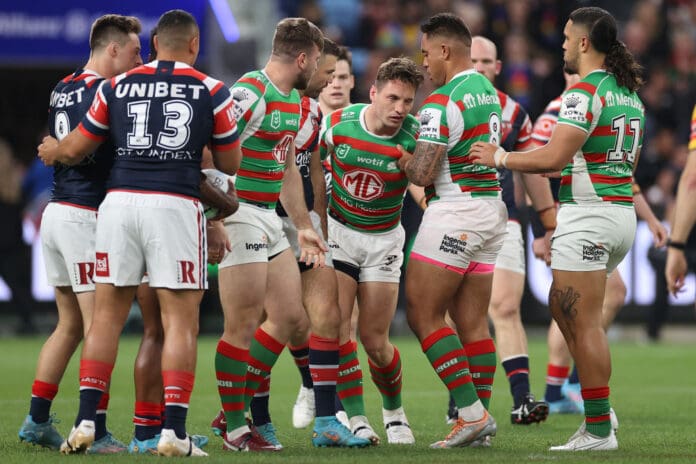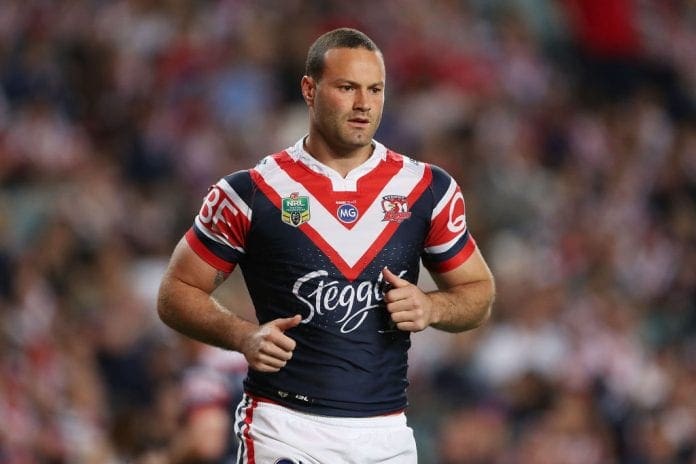With the World Cup finally here, it's hard to believe that the majority of people only found out about the tournament's concussion rules less than a week beforehand.
It's even harder to believe that looking at the rules – which are different to the NRL – would lead to questions about how detrimental a standardised approach to concussion could be.
In the wake of recent developments regarding the physiological impact of concussion on rugby league icons like Mario Fenech and James Graham, as well as the class action being launched in England by former players dealing with the delayed impacts of repeated head-knocks, it's surprising that the decision to stand players down for at least seven days as they recover from a failed HIA has been met with outrage about the impact it will have on teams rather than the intended benefit to players.
The issue of concussions has been a constant challenge for the NRL in recent years, and they've done admirably in their management of a constantly evolving situation overall.
But questions need to be asked about the external influences on concussion protocols in Australia.
Rushing back
There was a perfect example in the NRL finals, as both Cameron Murray and Mitchell Moses were hurried back into their teams for important games despite being virtually knocked unconscious just days before.

Meanwhile, in England, man of steel Brodie Croft was forced to miss Salford's preliminary final against St Helens after he failed an HIA during the semi-final.
Why? Because just like in the World Cup, any Super League player who fails an HIA during a game or at training won't be permitted to engage in that activity again for a pre-determined period of 11 days.
Croft had been a revelation for Salford this year, taking the Red Devils back to the top end of the table – and it's a fair case to make that his mandatory omission was what cost them their shot at Super League glory this year – but does that mean we should be sacrificing the welfare of our players to ensure the best team is on the field?
Croft probably wished he was back in Australia, where such consistent adherence to the rules is a thing of the past.
While the NRL has also employed the 11-day period, players can be permitted to return to the field before that time so long as they have the express permission of an ‘independent' concussion doctor.
In England, a doctor's clearance still means a player can't return for seven days.
The use of the word ‘independent' is also important, to remove the perception of bias or favour in helping a player return. But the term also implies a lack of standardised measures, and it's possible that clubs will employ physicians who will be more amenable to the pressures of the football department.
But in the case of both Murray and Moses, coaches were asked how their stars were immediately after the game, which is fair enough.
Both times the players were said to be looking good, up and about, coherent and with a memory of events – though these conversations are held in the immediate aftermath.
These words, while being used in newspapers and online to paint a picture of someone who was ill-affected, almost immediately negate any consideration of long-term impact in the eyes of the media and the public.
The coach also isn't a medical expert, so there's also little to no legitimacy in their assessment.
But what sells more papers and gets more clicks? Ruling these guys out immediately so that they can focus on recovery? Or giving us an update every day as the players ‘race the clock' to clear protocols and start to personally feel the pressure after being asked the same question over and over again.
Masters of disguise
While he didn't play too poorly, Murray wasn't up to his usual standard in the elimination final against the Roosters. Even the panel on NRL360 could smell something suspicious, with Paul Kent declaring that Murray has clearly learnt how to disguise the key symptoms of concussion.
On one hand that's a pretty damning allegation, but it's worth considering.
If concussion criteria become standardised and players learn what doctors are looking for before taking them from the field or judging them unfit to continue, those players are naturally going to try and find ways to ensure they make it past whatever base-level indicators lead them being ruled out.
Some of it will be muscle memory by this point, they've done so many HIA's.
While a clear concussion would be hard to hide, there are no doubt a multitude of players who've been close to being rubbed out, but stayed on the field because they were better at managing the symptoms they knew were being assessed.
I'm not saying they're trying to gain an advantage or exploit a loophole, they're just desperate to remain on the field.
Was Murray trying to deceive? Or was he misled into thinking that he was ok by groups who are pressured to prioritise a speedy recovery over player welfare?
Leaving the potential for an early return runs the risk of compromising player health long-term. We all want to see the best players on the field, but not if they're going to be forced into retirement in 18 months' time due to constant head-knocks.

Look at what has been revealed about league icon Mario Fenech in recent weeks. He played 275 games at the highest level at a time when concussion barely warranted a mention. Now, 27 years later, he has little memory left and will soon require full-time care. He's a few weeks shy of his 61st birthday.
Or consider James Graham, who has been actively investigating the impacts of concussion on his own body after over 400 first-class games and what he says is likely around 100 concussions.
He retired two years ago and already has a reduced brain mass which could lead to more damaging long-term symptoms. Go and listen to his podcast.
You would imagine there's a sense of fear on the player's behalf that is reawakened when these stories emerge.
By telling themselves that they're ok, by denying themselves that enforced rest or assessment or pushing past criteria despite underlying symptoms, they're attempting to stave off the end of their own careers while also putting their lives and health at risk.
A couple of failed HIA's in a row could suddenly result in talk of early retirement – a much more terrifying prospect to a lot of young league players than the idea that they might suffer brain damage or other debilitating effects 20 years from now.
Consider what happened to Boyd Cordner, a club, state and national team captain who was forced into early retirement by a desire to ‘put my own health first', he was so concerned about the lasting impact of repeated concussions.
Diluting deterrents
How are the NRL able to claim they're working hard on concussion after a year of high shots has largely resulted in fines at the judiciary and toothless warnings about ‘personal deterrents' for repeat offenders?
In England, any act of foul play which results in head contact (whether that be a punch thrown in a fight or, say, someone coming down on the person they've tackled with a stray elbow) is immediately slapped with a Grade D charge and a minimum of 3-5 weeks out.
Sure, the NRL has strong measures on spear tackles and shoulder charges, but plenty of other potentially risky acts aren't even going to the judiciary.
We're happy to give Dale Finucane weeks for an accidentally disastrous head clash – which is fine in and of itself as a means of risk mitigation – yet acts involving some element of intent fail to draw any similar punishment.
The consistency, or lack thereof, creates a confusing impression about just how seriously the issue is being taken.
When Peter V'Landys delays Taylan May's suspension for no other reason than to keep the best players on the field for the big games, how are we supposed to believe that the same regard isn't being given to concussion protocols?
When the media start expressing confusion about tournament rules and then question whether or not it's going to affect the big games at the business end of the tournament, we're clearly still missing the point.
The World Cup should be showing the NRL how to approach concussion issues – not with a focus on the game and the commercial appeal, but with a view to protecting players and ensuring their health and longevity.

Yes, things have already changed a lot. I'm not here to say the NRL is doing nothing on the matter, but they need to look outside themselves.
Look at what's happened to Mario, look at what's happened to James Graham, look at what happened to Cordner, our last Kangaroos captain.
Look at the class action lawsuit that's about to be launched in England, read the devastating testimonies from the former players about their quality of life now.
Whether out of consideration for the players or the bottom line, something needs to be done.
The Telegraph says the ‘new' rules will have “significant repercussions” on the tournament - but they're only talking about selection impact.
If this is the approach we're going to take to the matter, I can assure you that the repercussions further down the line will be far more significant than today's crisis merchants could have anticipated.






















